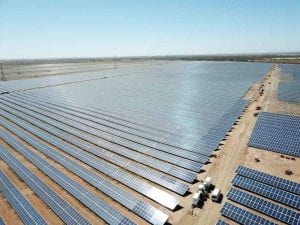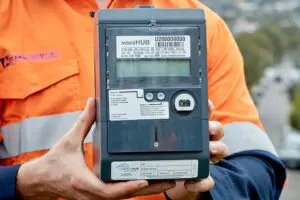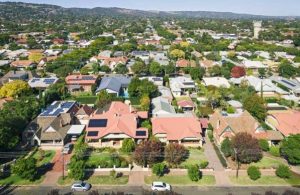On Tuesday VEPC released a new paper, written with Peter Harris and Ted Woodley on what we think our new Australian Government should do in electricity. As only he can do, RenewEconomy editor Giles Parkinson pulled the eyes out if it on the same day.
To reprise, we think the priority for the Commonwealth is storage, storage, storage. Without lots of storage we will not get to the 82% renewable electricity by 2030 that Federal Labor has promised.
We propose a (federal) Renewable Electricity Storage Target as a way for the Commonwealth to contributing to the delivery of it’s objective.
But what about transmission? We think the picture here is reasonably clear: the States have the obligation to supply electricity.
They and their network service providers are close to the local details of supply and demand. The States also regulate land use and so the States are in a much better position to know where, when and how much transmission is needed.
What we found when we looked, was lots of innovative work being done on transmission access and pricing – within the government departments and network service providers in NSW, QLD and VIC. It is attracting some of our best and brightest and they are solving problems through negotiation and innovation. They should be encouraged to continue.
Without the new transmission, the States will not be able to meet their own emission reduction targets, which are all (except Queensland) higher than Labor has taken to the federal election. The State governments – not the Australian Government – must be held to account for meeting the State’s targets.
Is tax-payers’ money needed to make the transmission happen? I don’t think so. The amounts here are not big, certainly not when compared to what needs to be done in storage. Why burden the tax-payer with something that private lenders and equity providers are falling over themselves to get involved in?
What then is the role of our quasi-national regulators – the Energy Security Board, the AEMC, AER and AEMO in transmission planning? This is where it gets tricky. As long as our State and Federal Governments instruct the regulators not to put a price on emissions, their ability to provide credible advice whether on issues of market or regulatory design or investment approval, is compromised.
Let me illustrate this argument through a case study: the Western Victoria Transmission Project (WVTP). WVTP must surely be one of the most obviously beneficial transmission augmentations to be had.
There are a number of existing and prospective wind and solar farms in north and western Victoria desperate for its capacity. Per kilometre-MW it is much the cheapest large transmission augmentation that I know of, and the capacity it connects is essential for the replacement of Latrobe Valley brown coal generation.
How then did the Regulatory Investment Test assess this project? It put no price on carbon and so the Test counted as the benefit of this project that it would expand interconnection capacity to NSW, thereby allowing Vic brown coal generation to replace less emission-intensive but more expensive (excluding emissions) NSW and QLD coal and gas.
In fact AEMO assumed that the Vic, NSW and QLD coal generation that existed in 2033 would be going flat out all the way to 2075. This produced enough “benefit” to have the benefits exceed the costs, and WVTP was given the nod.
In fact AEMO’s analysis suggested that WVTP would make almost no difference to wind and solar generation in Victoria, than if WVTP was not built. Of course this is nonsense.
It arises because a price has not been put on emissions. Had a proper price been placed on emissions – let’s say $75/Tonne CO2-e – it would have shown that VIC brown generation would reduce as it was replaced by wind and solar from Western Victoria, made possible by WVTP.
My guess is that such (correct) analysis would suggest that a different project on a different route would be preferred, rather than the one that was recommended – which was predicated on greater interconnection between VIC and NSW.
Exactly the same problem arises with all other Regulatory Test applications. It also arises albeit in a different way with AEMO’s ISP modelling, in which emission constraints (when included are reflected in emission-intensity limits.
The application of this approach results in all of VIC’s brown coal generation being closed by 2031, in AEMO’s “Step Change” scenario (which they say is their most likely scenario). This is surely impossible: just where is 35 TWh of renewable generation in VIC going to come from in the next 7.5 years?
It seems to me that frustration is often directed at the agencies or the Regulatory Tests they use: if only these could be fixed, all would be well. Is this not a misdirection?
The real problem seems to be that the regulators have been cut off at the knees: they have been instructed to ignore the biggest cost of electricity (GHG emissions) and yet somehow also to design and oversee markets and approve transmission investments that reduce emissions.
Might it be that the time for so-called “arms-length” regulators to “fess-up” to the public and to our Governments that as long as they are required to not put a price on emissions, they are unable to advise Government, or oversee the industry in a way that accounts for the emission reductions that all Governments in Australia now demand.
The scope of their activities should be trimmed accordingly, and the States and Commonwealth left to get on with things. Perhaps the decision to bring the AER under the Department of Energy and Climate change recognises this.
Too-clever-by-half sleight-of-hand schemes like the National Energy Guarantee have been put up and, quite rightly, shot down. Faffing about with the National Energy Objective in a way that requires regulators to account for environmental objectives but not actually price emissions, should also be given short shrift. If you can’t do the job properly, best not to try to do it at all, and rather give the job to someone who can.
The people have spoken, and what I heard them say is that the time for half-measures has passed.










